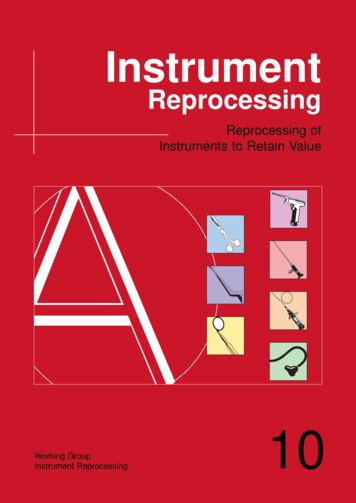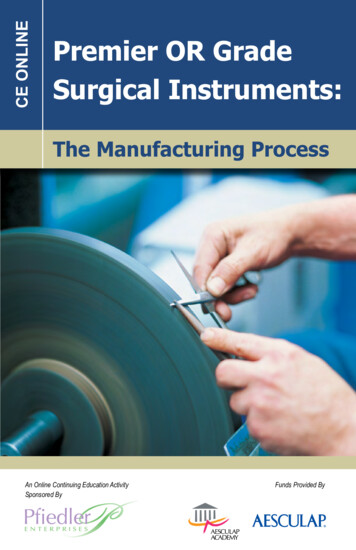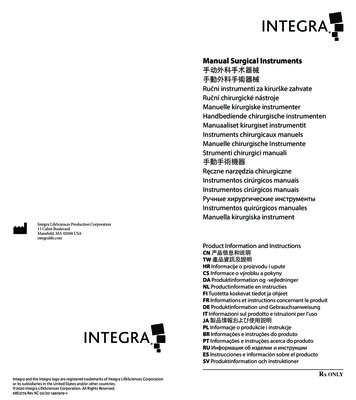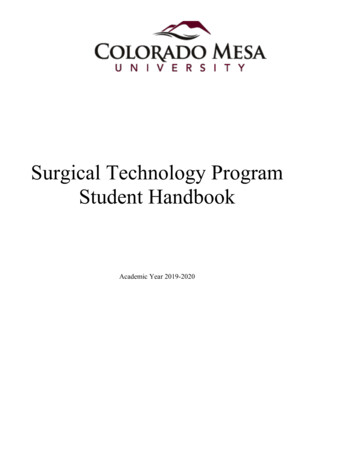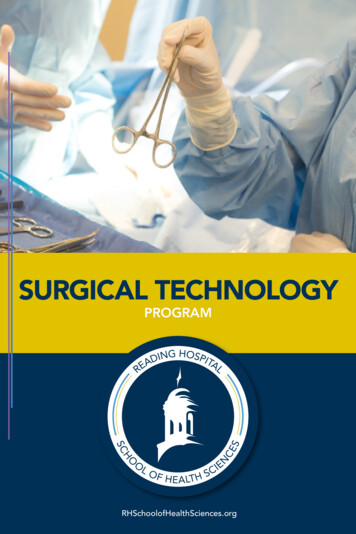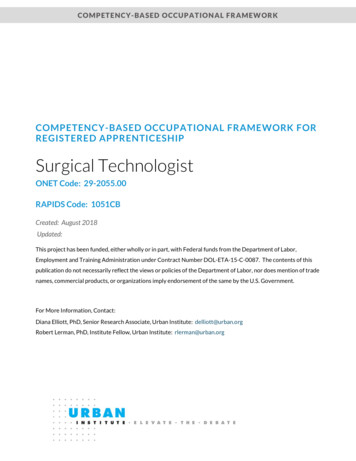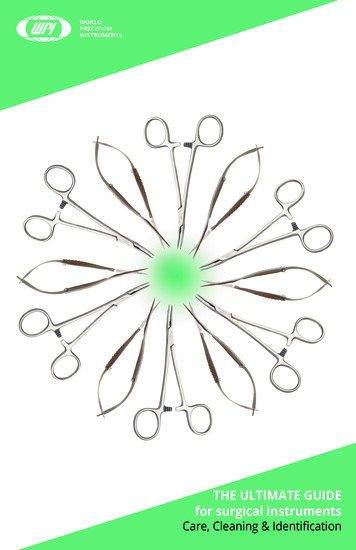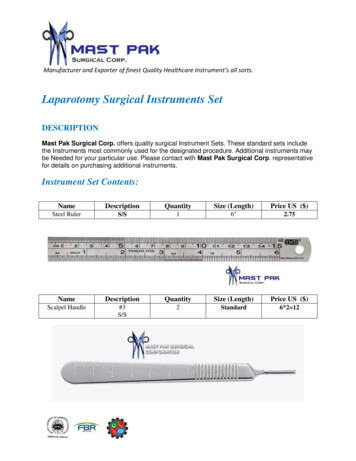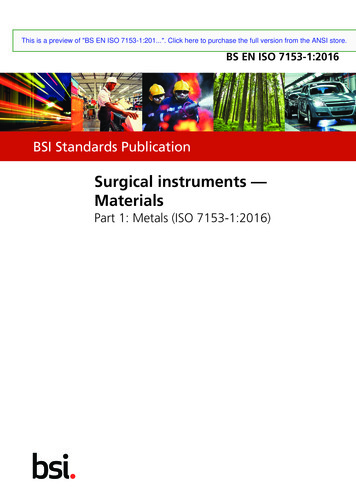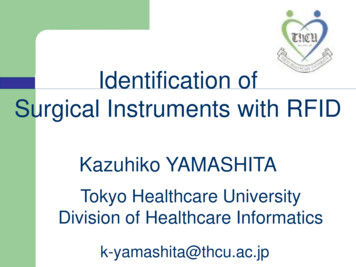
Transcription
Identification ofSurgical Instruments with RFIDKazuhiko YAMASHITATokyo Healthcare UniversityDivision of Healthcare Informaticsk-yamashita@thcu.ac.jp
I wanna be afirst climber!Can’t wait!TOKYO SKY TREESpring ,2012Completion634m
Patient Safety & Quality Management- An urgent problem for Healthcare Estimate of the death toll caused bymedical errors 98,000 / year in US by IOM report 23,000 / year In Japan by a reportsponsored by MoH・Collection of accurate and quantitative data(data management)・Automated system for physicians, nurses,medical workers, and patients・Building Evidence for medical safety
Problem of management on surgicalinstrumentsMedical errors at clinical sitesSocial problem Rate of incidents that surgical instruments or spongeare left inside human bodies : 1 / 10000operation Frequency of errors in setting containers:2%How frequently is the instrument used?Is quality assured? To whom is it used?Management of those items by RFIDComputerized data management of surgicalinstruments (user friendly, burden free)
Ceramic RFID tag for surgical instrumentsCarved seal ID・Frequency13.56MHz・Diameter 6mm, thickness2mm①Applicable to metals,②Low dilatability low troublerate,③Rigid low damage
Results of basic tests on RFID Tag1.sterilization test (cycle test) 50 tags30 min, pressure 1.5 kgf/cm2,50 cycles trouble rate 0 %2. High temperature challenging test 20 tags200 , heating time 300 hours trouble rate: 0 %3. Water and ultrasonic test 80 tags28 kHz, 150 W, 30 min, 30 cycles trouble rate: 0 %4. High pressure test 10 tagsaverage pressure value 126.2kgf, 150 cycles trouble rate: 0 %
Durability & Contamination Testsat medical institute Durability test by washer-disinfector 77 surgical instruments, 31 cycles Durability test by autoclave 68 surgical instruments, 15 cycles Contamination test by ATP method 35 surgical instruments(A pair of scissors, 7Mosquito Clamps, 27 Kocher Clamps):Aftercontaminated by sheep blood, cleaned by awasher-disinfector Comparing Tag attachment section and Boxrock section
Durability/Contamination TestsInstruments in a washingbasketWasher disinfectorSetting in sterilizationcontainerAutoclave
Results of the tests Durability testMalfunction, No communication : 0 Contamination Test ATP Method:Luminescence testTag attachment section:38.7 6.1 [RLU]Box-rock section:39.8 6.0 [RLU] Meet the standard of “less than100RLU” byJapanese Association for Operative Medicine No breakage or separation of RFID tag
Load Test of RFID Tag1Load [kN]加圧[kN]0.80.60.40.201 137 273 409 545 681 817Measurement point計測点Test material : 6 surgical instrumentsLoad : 0.9kN(9kgf), 10000 Cycles breakage, drop out, no communication : 0
Tag Reader/WriterThe movement of the instruments can bemonitored by Reader/Writer under spreadboard for surgical instruments.No need of intentionalmotion for reading
Tag Reader/Writer
Operation RoomThe reader/writer is equipped under the spread boardfor surgical instruments
Data to be written in RFID In accordance with Steel Instrument 2D SymbolMarking Guideline & GS1 Spec.(EPCglobal in the future) Data Structure : to be based on ISO/IEC15418GTIN-14(AI)(AI)Serial No. (8 digit)01 0 45 1234567 123 0 21 12345678Global standard a master dataCommon serial number of surgical instrument
Actual use for human surgery
Actual use for human surgery
Summary Developed RFID Tag for surgical instruments Checked the basic performance of the tagattached to surgical instrument Developed a reader/writer for operation roomand central supply. Developed a basis of software for collectingdata
Effects of surgical instrument with RFIDSurgical instruments manufacturerTraceability, assist of individualmanagementCentral supply roomMaintenance, washingSetting containerIncreasing setand sterilizationof container,Build evidence onFormedicalstaffburden freesurgical instrumentsand patient safetyChecking, number ofCounting instrumentstimes, keeping qualitybefore, during, afterof surgery, depreciationoperationA system can check automatically,management of asset in hospitalburden free on instruments count,increase quality of operationOperating room
“Insanity:Continuing to do thesame thing and expectingdifferent results.”- Albert EinsteinContact us.Kazuhiko YAMASHITA:k-yamashita@thcu.ac.jp
Rate of incidents that surgical instruments or sponge are left inside human bodies : 1 / 10000. operation. How frequently is the instrument used? Is quality assured? To whom is it used? Computerized data management of surgical instruments (user friendly, bur
